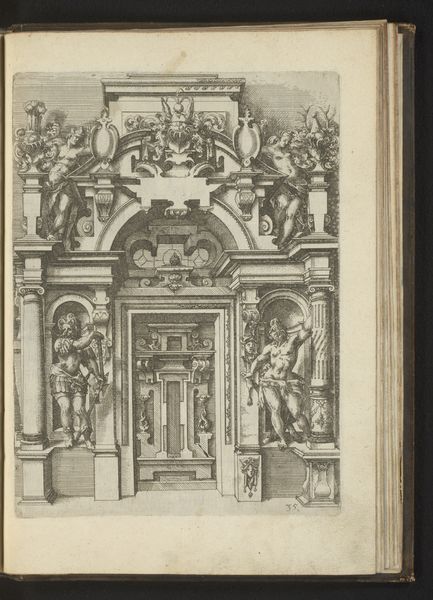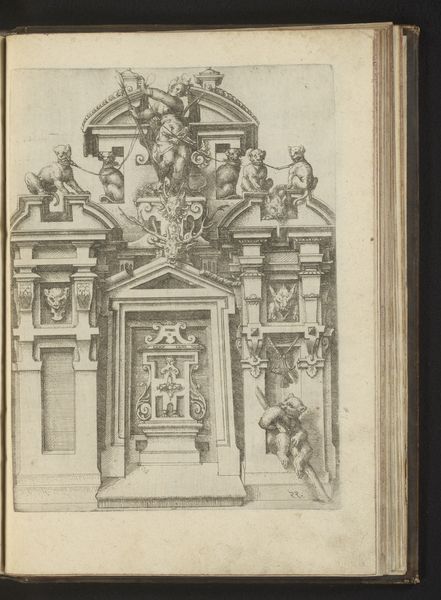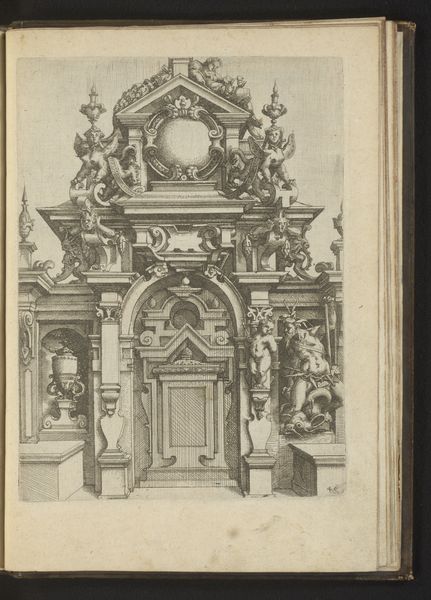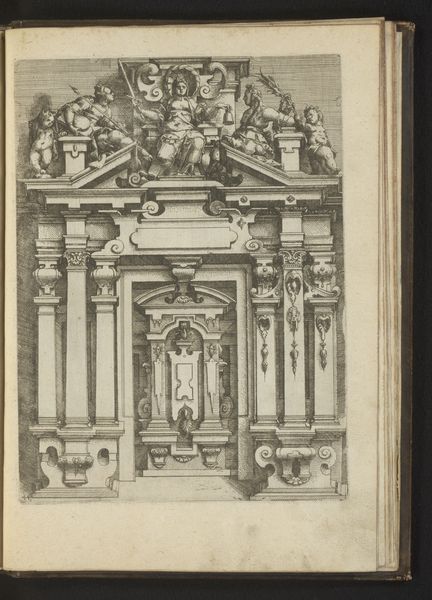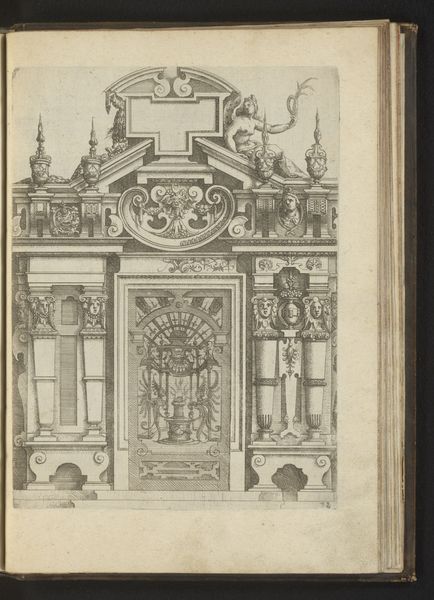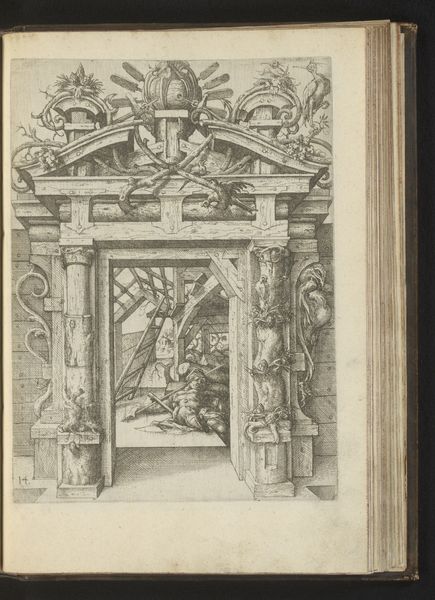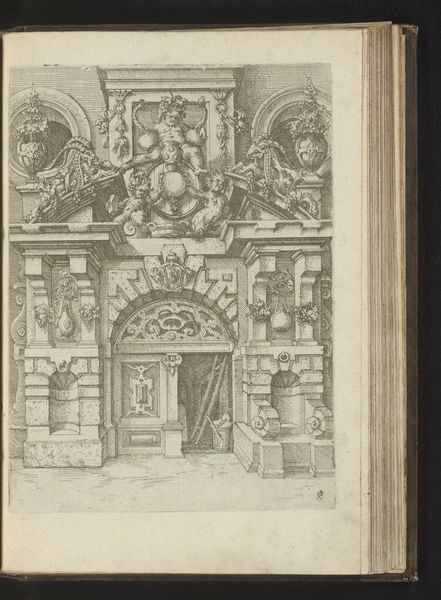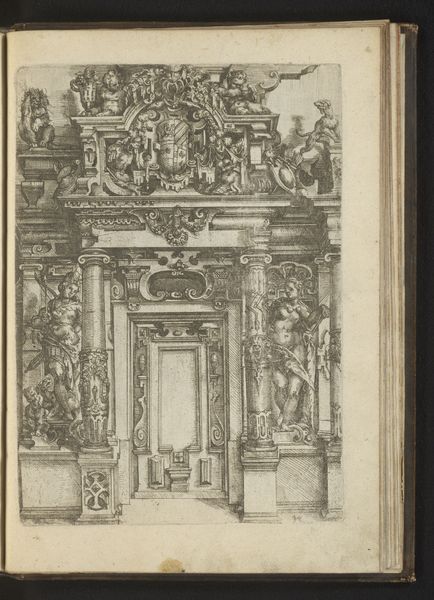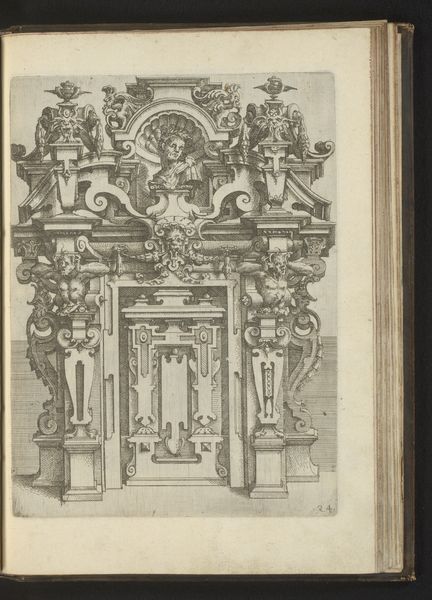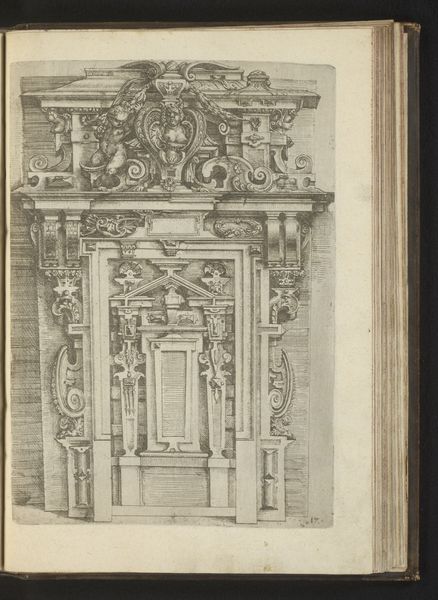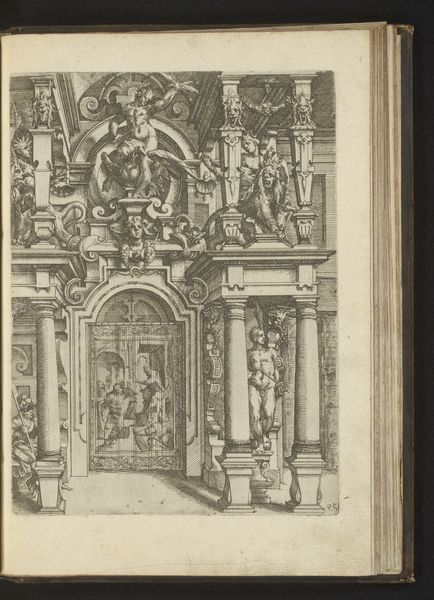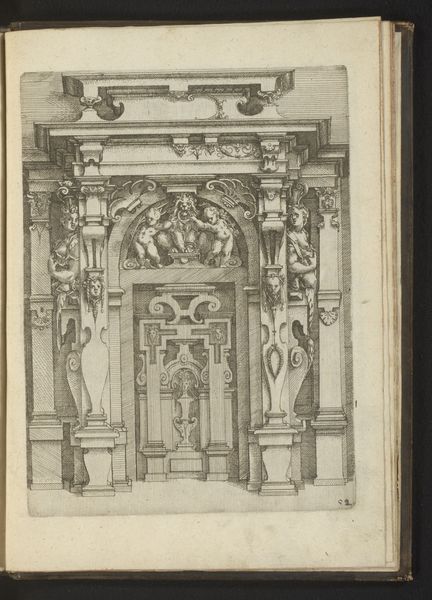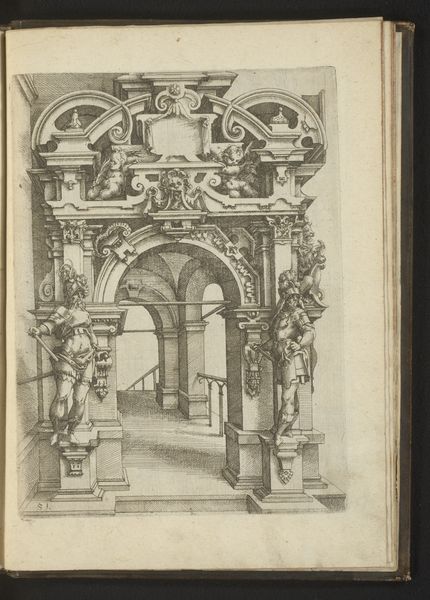
Portaal geflankeerd door vier kariatiden naast de deur met groteske vlakdecoraties 1593 - 1595
0:00
0:00
drawing, engraving, architecture
#
drawing
#
old engraving style
#
mannerism
#
form
#
line
#
history-painting
#
engraving
#
architecture
Dimensions: height 249 mm, width 186 mm
Copyright: Rijks Museum: Open Domain
Curator: Wendel Dietterlin's engraving, dating from 1593-1595, is titled "Portal flanked by four caryatids next to the door with grotesque flat decorations." What do you make of it? Editor: Utterly captivating, and strangely dreamlike! It feels as though this portal could lead to… anywhere. The caryatids have such weight and dignity to them, a sort of burden, but there is also some whimsical charm. Curator: Dietterlin, active in the late 16th century, designed architectural elements, interiors, and stage sets. This engraving displays his style, reflecting the Mannerist fascination with complexity and artifice, even bordering on the bizarre. Look closely, for example, at the use of the female figure as structural support. Editor: Absolutely. It’s as if he’s blurring the line between ornamentation and architecture. And the line work! Each tiny etched mark contributes to the overall density and texture, like tiny parallel universes adding up to a multiverse of expression. I get lost in this artwork. Curator: Engravings like this served not only as artistic expressions but also as pattern books, influencing architects and artisans. The reproduction potential of printmaking was, for Dietterlin, a conduit for his visions. The drawing highlights not just his imagination, but also a set of technical processes of reproduction. Editor: Which begs the question—could the artisans and architects recreate such incredible density of ornamentation through any means beyond the drawing? I see a push and pull, a kind of almost-impossible task Dietterlin puts on the viewers (artisans). It’s tantalizingly decorative, it invites us in, but perhaps warns against actually trying to create this very real object, with its complex layers. Curator: That's a beautiful point about the work's ambivalence towards its own realization, and a valuable tension inherent in the artwork's role as an inspirational drawing for artists. The historical importance lies in how Dietterlin blurred those distinctions and pushed his style beyond practical realization. Editor: So, as much an exercise in fantasy, an exercise in expanding limits, as it is practical model. Fascinating.
Comments
No comments
Be the first to comment and join the conversation on the ultimate creative platform.
